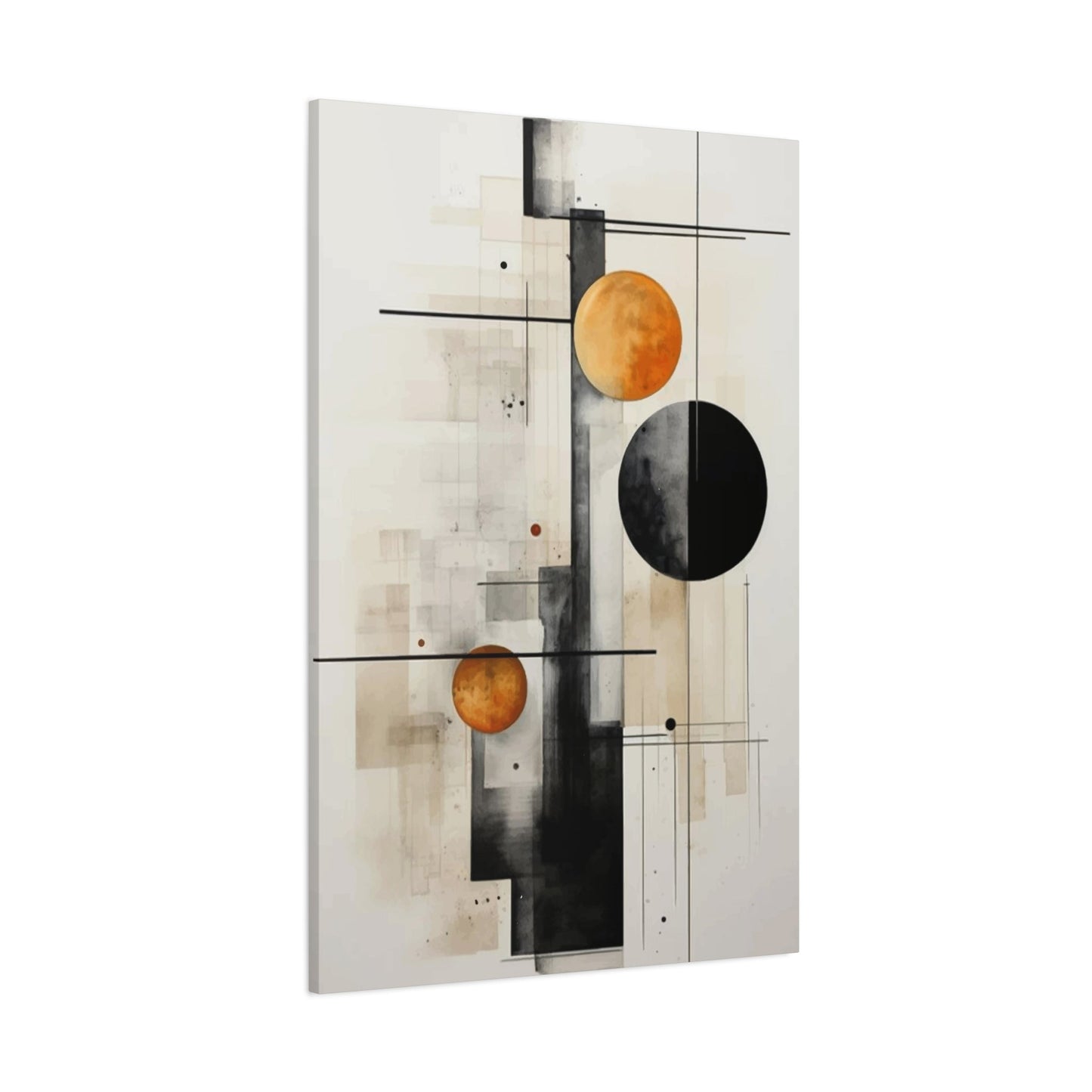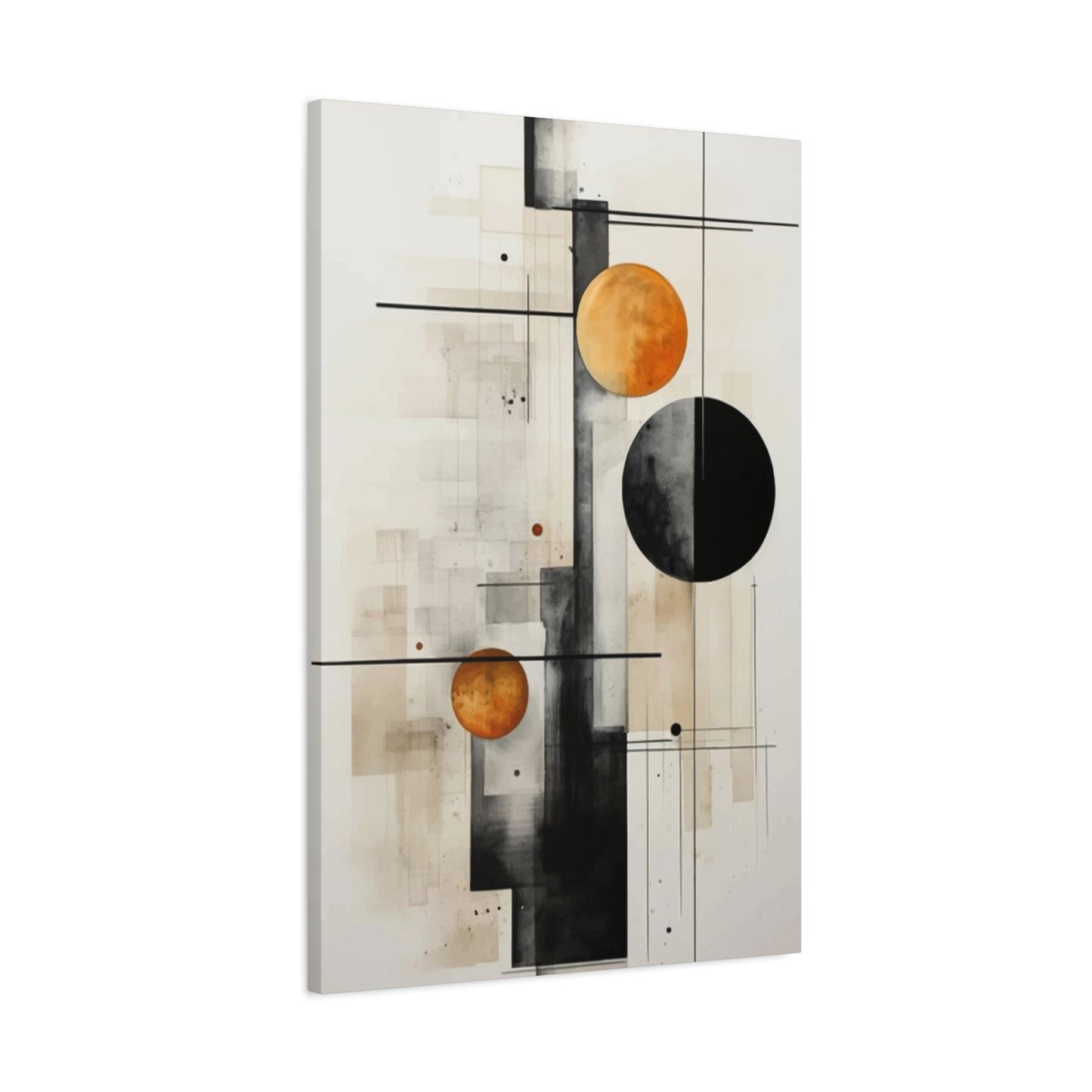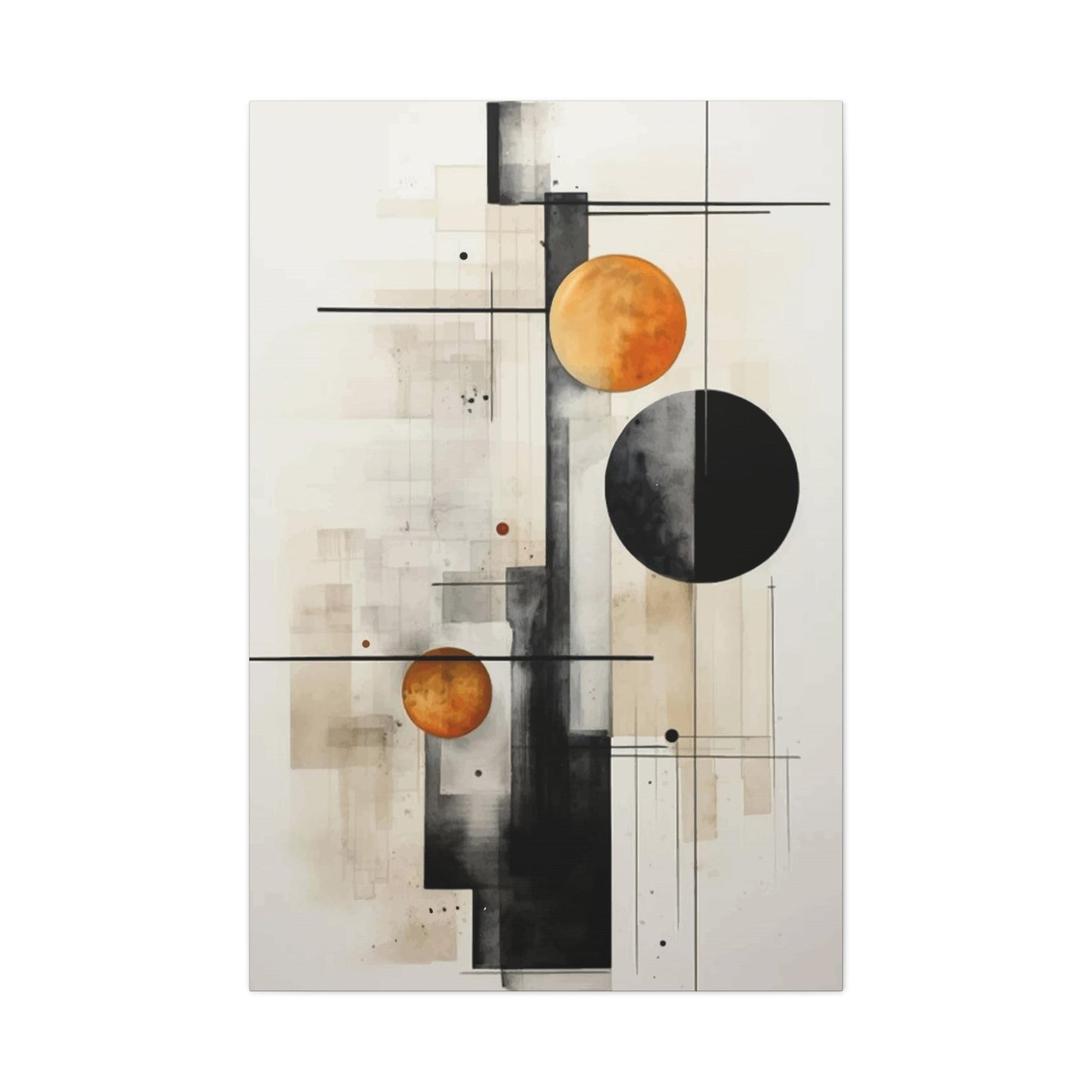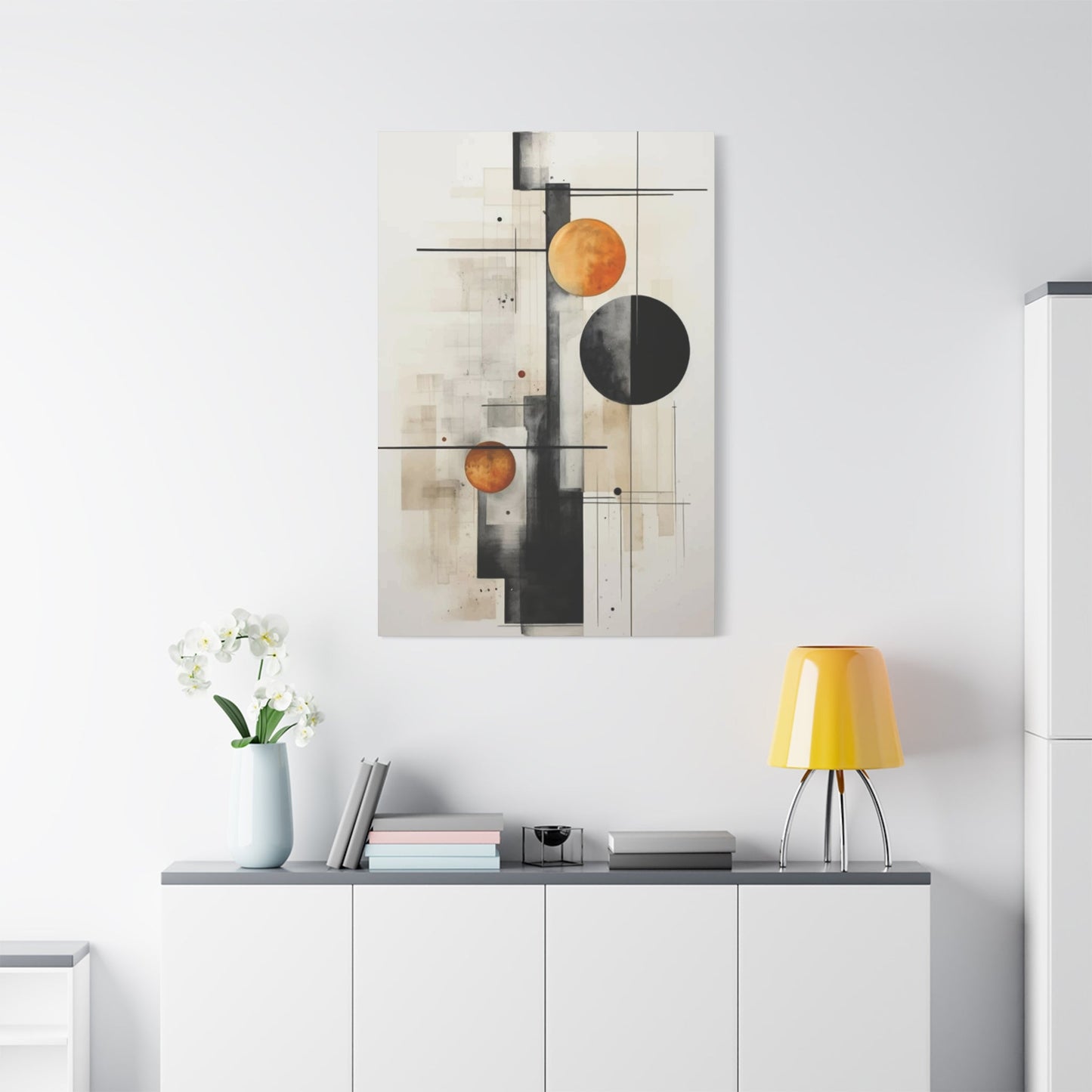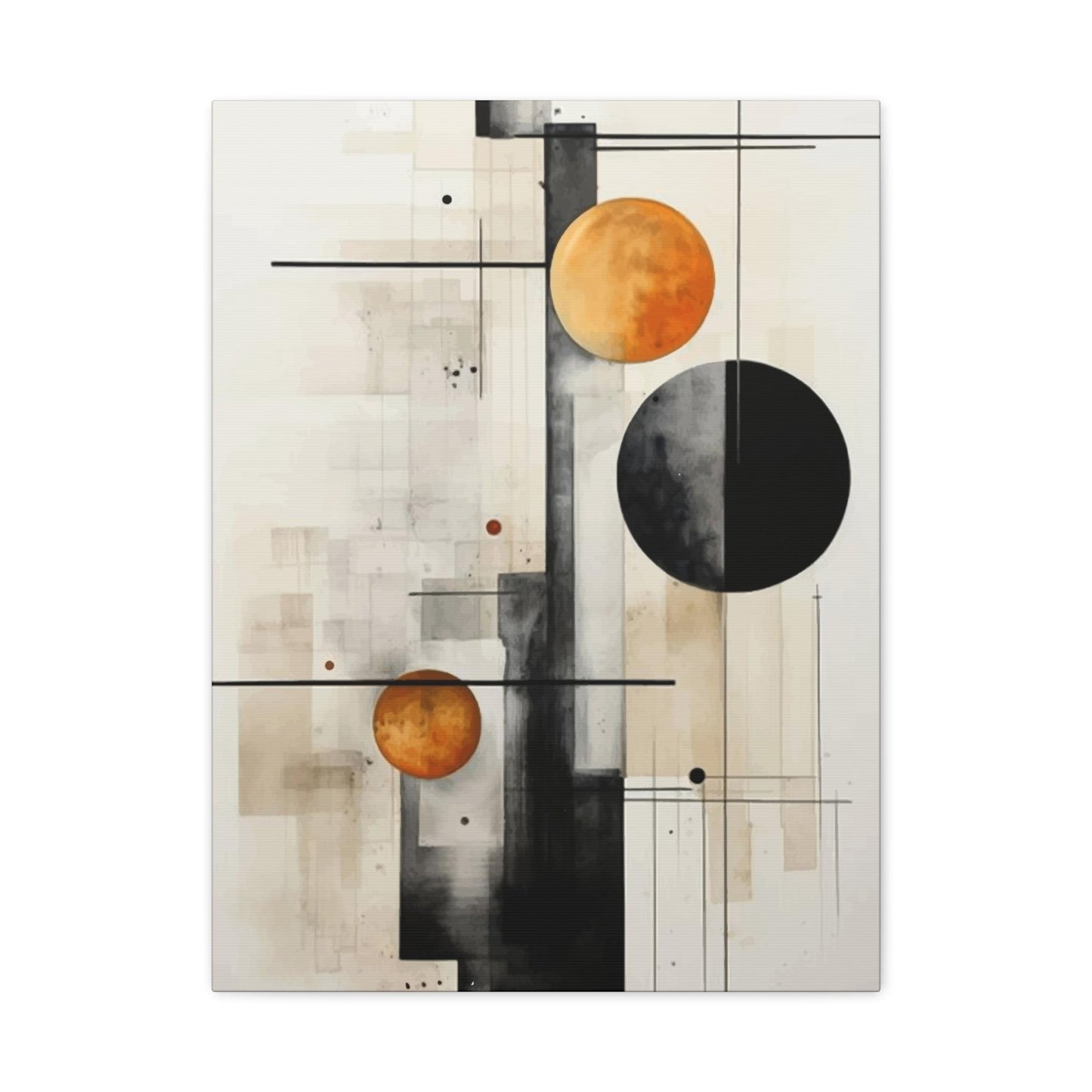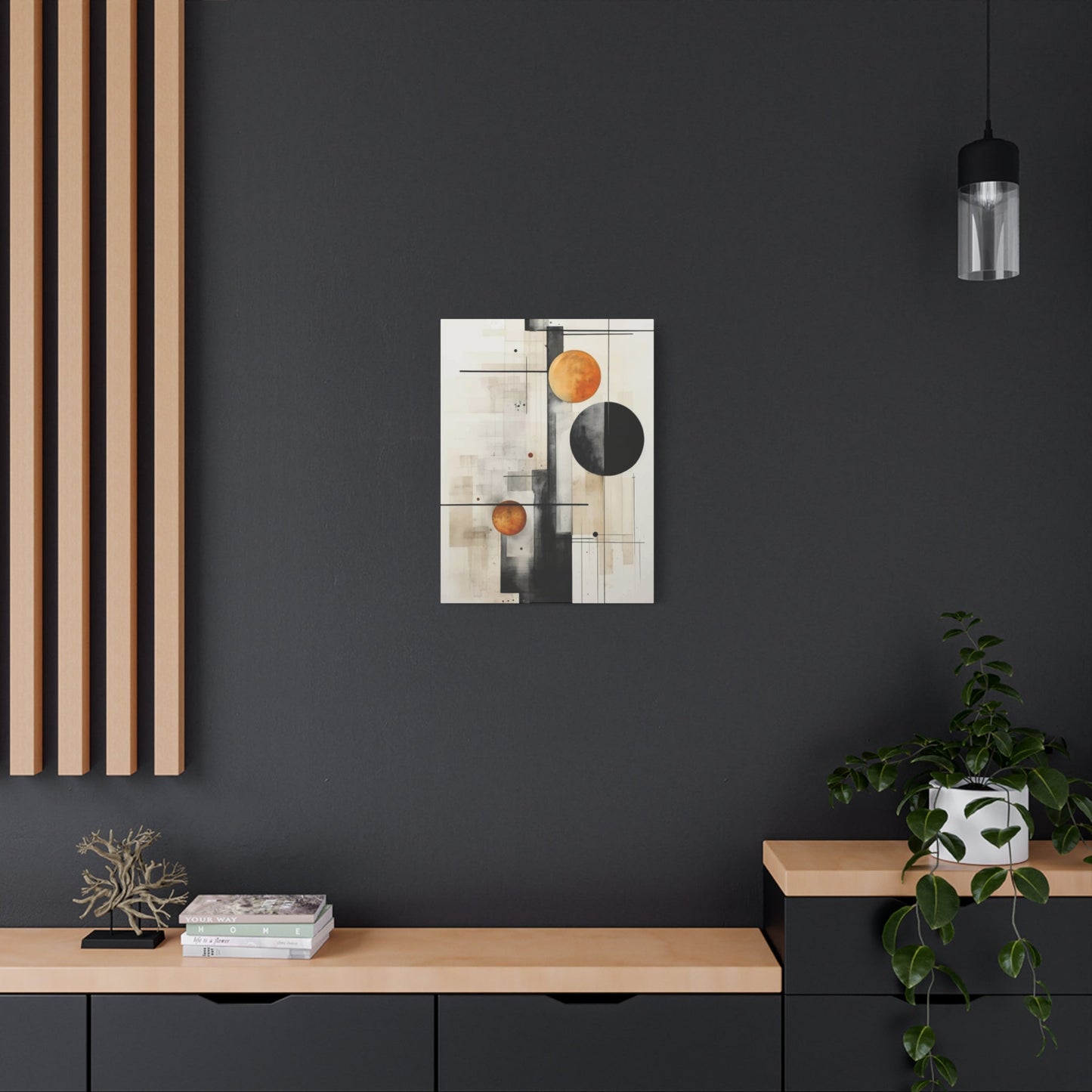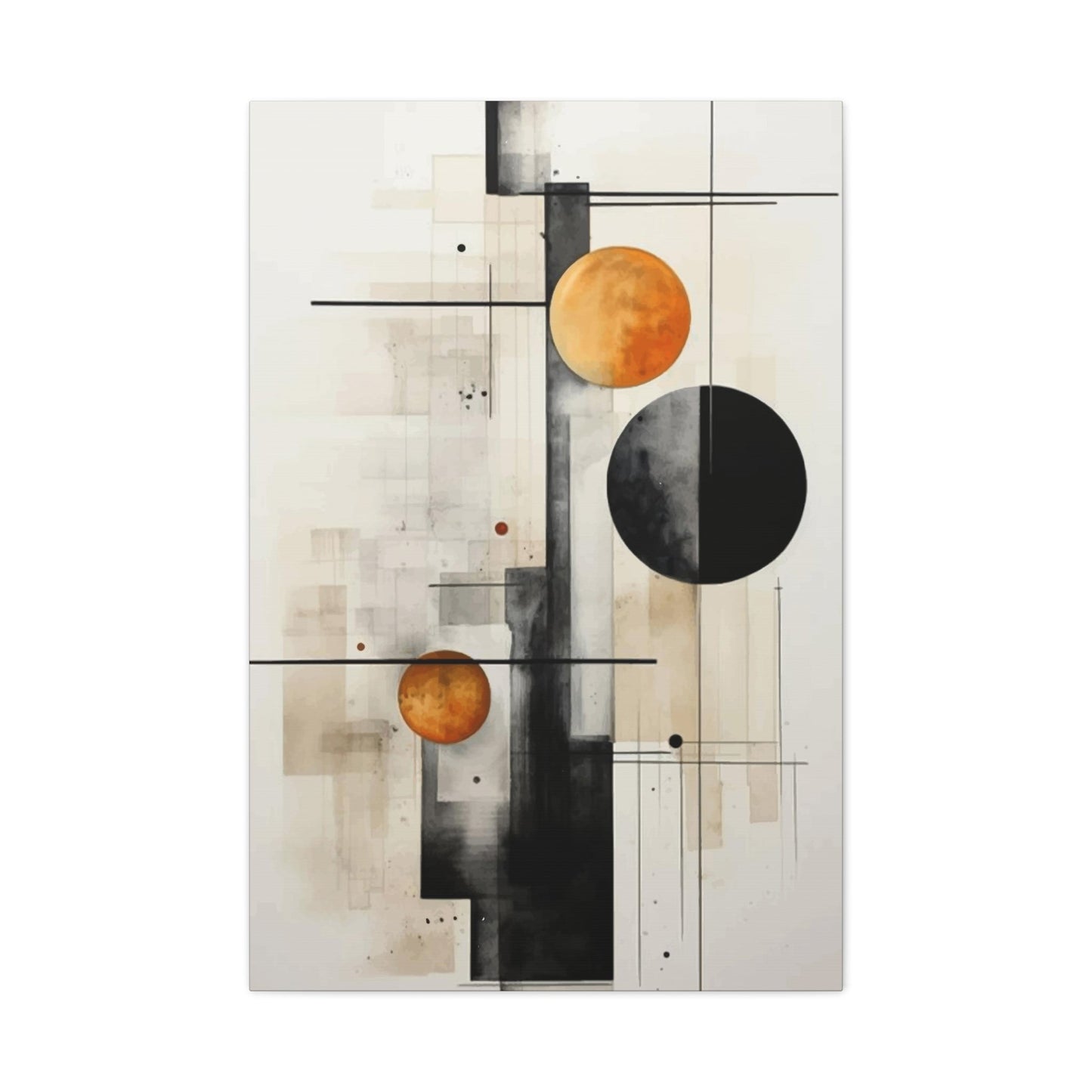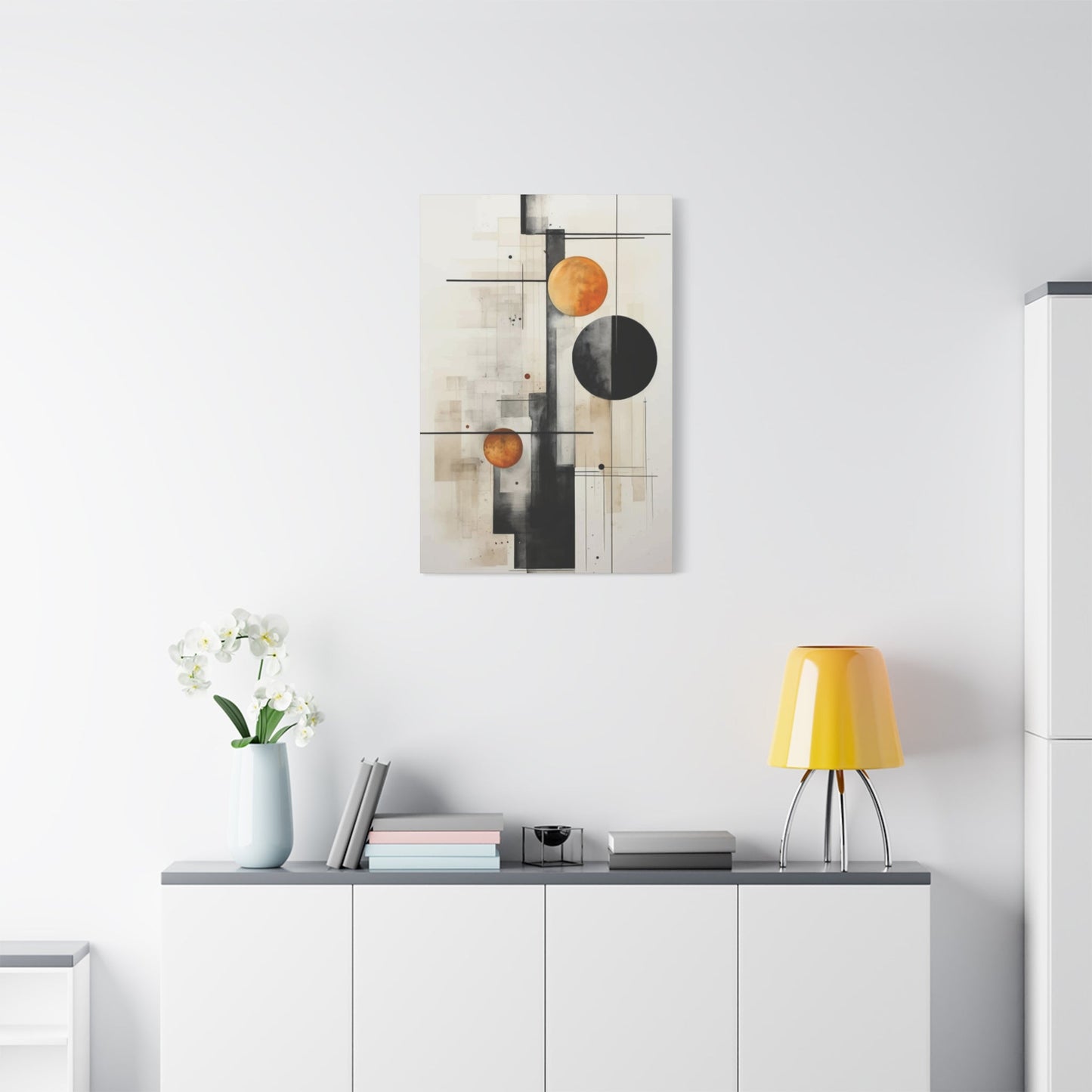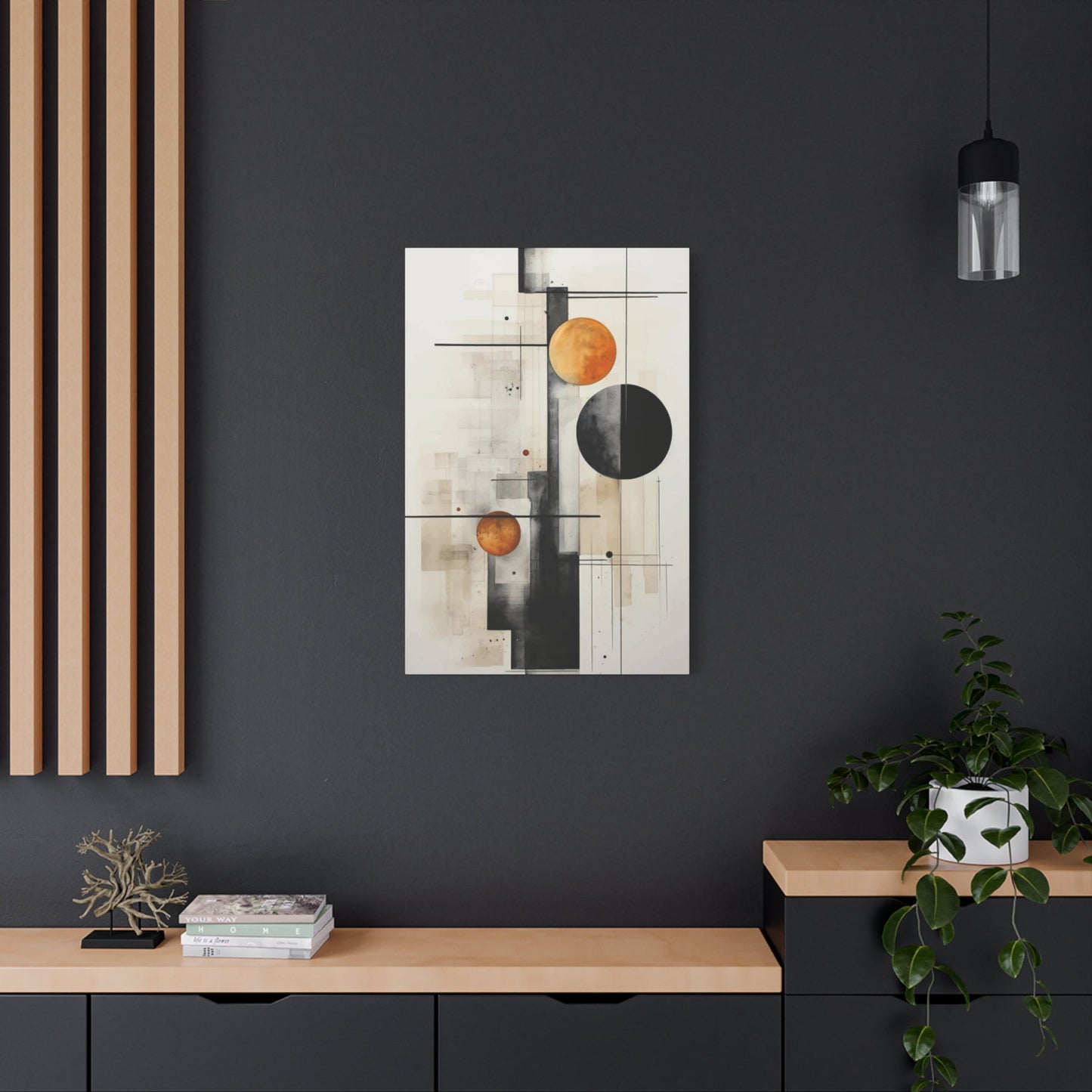Sophisticated Ivory Wall Art: Mastering Elegant Home Aesthetics
The world of home decoration has witnessed a remarkable shift toward understated elegance, with ivory tones emerging as the cornerstone of sophisticated aesthetic choices. This comprehensive exploration delves into the multifaceted realm of ivory-toned artwork, examining how these refined pieces can transform any living environment into a sanctuary of timeless beauty and contemporary style.
Ivory Wall Art: Timeless and Elegant
The enduring appeal of ivory-colored artwork lies in its remarkable ability to transcend fleeting design trends while maintaining an air of sophistication that speaks to discerning homeowners. These cream-colored masterpieces possess an inherent versatility that allows them to complement virtually any architectural style, from Victorian mansions to contemporary lofts.
Ivory represents more than just a color choice; it embodies a philosophy of refined living that values subtlety over ostentation. The gentle warmth of these tones creates an inviting atmosphere that welcomes guests while providing residents with a calming retreat from the demands of modern life. Unlike stark white, which can feel clinical or cold, ivory brings a softness that makes rooms feel more approachable and lived-in.
The timeless quality of ivory artwork stems from its connection to classical art traditions. Throughout history, artists have gravitated toward these warm, neutral tones for their ability to convey both elegance and accessibility. From the marble sculptures of ancient Greece to the painted masterpieces of the Renaissance, ivory shades have consistently represented refinement and artistic excellence.
Contemporary artists continue to explore the possibilities of ivory pigmentation, creating works that honor traditional techniques while embracing modern sensibilities. These pieces often feature subtle variations in tone and texture that reward closer inspection, revealing layers of complexity that might be missed at first glance. The result is artwork that grows more interesting over time, making it an investment in long-term aesthetic satisfaction.
When selecting ivory artwork for your home, consider pieces that demonstrate skilled craftsmanship and attention to detail. Look for works that show variation in their ivory tones, as these subtle differences create visual interest and prevent the artwork from appearing flat or monotonous. The best ivory pieces often incorporate multiple shades within the same color family, creating depth and dimensionality that draws viewers into the composition.
Why Ivory Art Fits Minimalist Spaces
The marriage between ivory artwork and minimalist design principles creates a harmonious relationship that exemplifies the "less is more" philosophy. Minimalist environments thrive on clean lines, uncluttered compositions, and carefully selected elements that serve both functional and aesthetic purposes. Ivory-toned pieces naturally align with these principles, offering visual impact without overwhelming the carefully curated atmosphere.
In minimalist settings, every element must earn its place through both beauty and purpose. Ivory artwork excels in this environment because it provides essential visual warmth without competing with other design elements. The subtle nature of these pieces allows them to serve as sophisticated focal points while maintaining the sense of calm that minimalist design seeks to achieve.
The neutral palette of ivory artwork complements the typical minimalist color scheme, which often features whites, grays, and natural wood tones. Rather than introducing jarring contrasts that might disrupt the serene atmosphere, ivory pieces enhance the existing harmony while adding layers of visual interest that prevent the room from feeling sterile or unwelcoming.
Texture plays a crucial role in minimalist design, and ivory artwork often excels in this area. Many pieces feature subtle textural elements that create visual and tactile interest without relying on bold colors or complex patterns. These textural variations catch and reflect light in interesting ways, creating dynamic visual experiences that change throughout the day as lighting conditions shift.
The scale of artwork becomes particularly important in minimalist settings, where each piece must make a meaningful contribution to the overall composition. Ivory pieces work well at various scales, from large statement works that anchor entire walls to smaller pieces that provide gentle accents in carefully chosen locations. The versatility of ivory tones allows for flexible placement options that support the minimalist principle of intentional design choices.
Contemporary minimalist designers often favor artwork that demonstrates restraint and sophistication, qualities that ivory pieces naturally possess. These works avoid the visual noise that can come from overly complex compositions or aggressive color palettes, instead offering viewers a chance to appreciate subtle beauty and skilled craftsmanship. This approach aligns perfectly with minimalist values that prioritize quality over quantity and lasting appeal over fleeting trends.
Soft Textures in Ivory Wall Art
The tactile qualities of ivory artwork contribute significantly to its overall appeal and ability to create inviting living environments. These pieces often feature a diverse range of textural elements that engage multiple senses, transforming wall displays from purely visual experiences into more immersive encounters that reward closer inspection and contemplation.
Artists working in ivory tones frequently experiment with various techniques to create rich textural surfaces that add depth and interest to their compositions. Impasto techniques, where paint is applied thickly to create raised surfaces, can produce stunning effects in ivory pigments. These raised areas catch and reflect light differently than smoother sections, creating a dynamic interplay of highlights and shadows that changes throughout the day.
Canvas texture itself plays an important role in ivory artwork, with many artists choosing specific weaves and treatments that enhance the overall textural experience. Rough-hewn canvases can create interesting interactions with ivory pigments, allowing the underlying texture to show through and add another layer of visual complexity. Conversely, smooth canvases allow for more precise application of textural elements, enabling artists to create specific effects exactly where they want them.
Mixed media approaches often yield particularly interesting textural results in ivory artwork. Artists might incorporate elements like rice paper, fabric, or natural materials to create surfaces that invite touch while maintaining visual cohesion. These additions can introduce subtle pattern variations that complement the ivory base while adding layers of meaning and interest to the overall composition.
The interplay between smooth and textured areas within a single piece can create compelling visual narratives that draw viewers into closer examination. Areas of high texture might represent energy or movement, while smoother sections provide visual rest and balance. This contrast keeps the eye engaged and creates a more dynamic viewing experience than purely smooth or purely textured surfaces alone.
Lighting considerations become particularly important when displaying textured ivory artwork. These pieces often benefit from angled lighting that emphasizes their three-dimensional qualities, creating dramatic shadow play that enhances the textural elements. Track lighting or picture lights positioned at appropriate angles can transform relatively subtle textural variations into striking visual features that command attention and admiration.
The psychological impact of textural ivory artwork should not be underestimated. Humans naturally respond to textural variations with both visual and tactile interest, and even when we cannot touch artwork directly, our brains process textural information in ways that affect our emotional response to the piece. Soft, inviting textures can make rooms feel more comfortable and welcoming, while more dramatic textural contrasts can create excitement and visual energy.
Creating Calm with Ivory Tones
The psychological impact of ivory coloration extends far beyond mere aesthetic preference, tapping into fundamental human responses to color that have been shaped by evolution and cultural conditioning. These warm, neutral tones trigger relaxation responses that can significantly improve the quality of living environments, making them particularly valuable in today's stress-filled world.
Color psychology research consistently demonstrates that warm, neutral tones like ivory produce calming effects on viewers, reducing stress hormones and promoting feelings of security and comfort. Unlike cool colors that can feel distant or clinical, ivory tones create psychological warmth that makes people feel more at ease and welcome in their surroundings. This effect is particularly pronounced in residential settings where comfort and relaxation are primary goals.
The subtle complexity of ivory pigmentation contributes to its calming properties by providing visual interest without overwhelming stimulation. Unlike stark white, which can feel harsh or institutional, ivory contains enough warmth and variation to feel organic and approachable. This quality makes ivory artwork particularly effective in bedrooms, meditation areas, and other locations where tranquility is desired.
Natural light interactions with ivory tones create additional calming effects throughout the day. These pieces often appear to glow softly in morning sunlight, creating gentle, welcoming atmospheres that ease the transition from sleep to waking consciousness. As daylight changes throughout the day, ivory artwork continues to provide consistent warmth and comfort, adapting naturally to varying light conditions without losing its essential character.
The association between ivory tones and natural materials like bone, shell, and aged paper contributes to their calming properties by connecting viewers with familiar, comforting references. These unconscious associations can trigger positive emotional responses that enhance overall well-being and create more satisfying living environments.
Creating calm through ivory artwork requires thoughtful consideration of composition and placement. Pieces with gentle, flowing lines tend to be more calming than those with sharp angles or aggressive geometries. Similarly, artwork featuring gradual tonal transitions rather than stark contrasts will generally produce more relaxing effects. The goal is to create visual experiences that soothe rather than stimulate, providing refuge from the visual chaos of modern life.
The cumulative effect of multiple ivory pieces can create powerful calming environments that support mental and emotional well-being. When carefully coordinated, these works can establish visual rhythms that promote relaxation and contemplation, turning homes into true sanctuaries that support healthy living and stress reduction.
Ivory Art for Neutral Decor
Neutral decorating schemes have gained tremendous popularity as homeowners seek timeless elegance that won't quickly become dated or require frequent updates. Ivory artwork serves as the perfect complement to these sophisticated palettes, offering visual interest and warmth without disrupting the carefully balanced harmony that makes neutral decorating so appealing and enduring.
The versatility of ivory tones allows them to work seamlessly with various neutral color families, from warm beiges and taupes to cooler grays and off-whites. This flexibility makes ivory artwork an excellent investment for homeowners who like to refresh their decorating schemes periodically, as these pieces can adapt to new color combinations while maintaining their essential appeal and relevance.
Layering different neutral tones creates depth and visual interest that prevents neutral decorating schemes from appearing flat or boring. Ivory artwork contributes to this layering by introducing subtle color variations that enhance the overall sophistication of the palette while providing focal points that anchor and organize the visual composition of rooms.
Texture becomes particularly important in neutral decorating schemes, where color contrasts are minimized in favor of more subtle visual elements. Ivory artwork often excels in providing textural interest that complements other neutral elements like natural wood, woven fabrics, and stone or ceramic accessories. These textural relationships create rich, satisfying environments that feel both comfortable and refined.
The timeless quality of neutral decorating is enhanced by ivory artwork that demonstrates classic appeal rather than trendy characteristics. Pieces with traditional compositional elements, skilled craftsmanship, and enduring subject matter will continue to look appropriate and attractive as decorating trends evolve around them, protecting the long-term investment in both artwork and overall decorating scheme.
Pattern plays a supporting role in neutral decorating, and ivory artwork can contribute subtle pattern elements that add visual movement without overwhelming the restrained color palette. Gentle geometric elements, organic forms, or traditional motifs rendered in ivory tones can provide exactly the right amount of pattern interest to keep neutral schemes feeling dynamic and engaging.
The sophistication of neutral decorating schemes depends heavily on the quality of individual elements, making ivory artwork selection particularly important. Pieces should demonstrate excellence in execution, whether through masterful brushwork, innovative techniques, or compelling compositions. In neutral settings, where dramatic color contrasts don't hide flaws, superior craftsmanship becomes even more crucial to achieving the desired aesthetic impact.
Mixing Ivory with Bold Colors
The strategic combination of ivory artwork with bold, saturated colors creates dynamic visual relationships that can transform ordinary rooms into sophisticated, gallery-worthy environments. This approach requires careful consideration of color theory and compositional balance, but when executed successfully, it produces stunning results that showcase both restraint and confidence in decorating choices.
Ivory tones serve as perfect neutralizing agents when working with intense colors, providing visual breathing room that prevents bold color choices from becoming overwhelming or garish. A single ivory artwork can balance an entire wall of vibrant color, creating equilibrium that makes both the bold and neutral elements more effective and appealing.
The warm undertones in ivory work particularly well with rich jewel tones like emerald green, sapphire blue, or ruby red. These combinations create sophisticated color harmonies that feel both luxurious and grounded, avoiding the potential pitfalls of using purely cool neutrals with warm, saturated colors. The ivory provides a bridge between different color temperatures that unifies the overall palette.
Complementary color relationships can be enhanced through ivory artworks that incorporate subtle hints of bold colors within their primarily neutral compositions. This approach creates sophisticated color echoes that tie decorating schemes together while maintaining the essential character of the ivory pieces. Look for artworks that feature delicate touches of accent colors that correspond to bolder elements elsewhere in the room.
Seasonal decorating changes become more manageable when ivory artwork serves as a neutral foundation that can accommodate different bold color accents throughout the year. Summer might call for combinations with fresh blues or greens, while autumn could feature ivory paired with rich oranges or deep purples. The ivory pieces remain constant while accent colors change, providing both continuity and flexibility.
The proportional relationship between ivory and bold elements requires careful consideration to achieve optimal visual balance. Generally, ivory should dominate the color relationship, with bold colors providing strategic accents rather than competing for equal attention. This approach maintains the sophisticated restraint that makes ivory artwork so appealing while allowing bold colors to provide necessary energy and excitement.
Contemporary art movements often explore the tension between neutral and bold elements, creating pieces that challenge traditional color relationships while maintaining visual coherence. These works can provide inspiration for homeowners seeking to incorporate both ivory artwork and bold colors in ways that feel fresh and current rather than predictable or conservative.
Abstract Art in Ivory Shades
The realm of abstract expression finds particularly fertile ground in ivory pigmentation, where artists can explore form, texture, and composition without the distraction of vivid coloration. These pieces often demonstrate how sophisticated artistic statements can emerge from seemingly simple color choices, proving that limitation can actually enhance creativity rather than constrain it.
Abstract ivory artwork allows viewers to focus on fundamental artistic elements like line, shape, and texture without the emotional associations that come with more recognizable subject matter or bold colors. This focus can create meditative viewing experiences that encourage contemplation and personal interpretation, making these pieces particularly valuable in residential settings where relaxation and reflection are desired.
The subtle color variations within ivory pigmentation provide abstract artists with rich possibilities for exploring tonal relationships and atmospheric effects. Pieces might feature barely perceptible shifts from warm to cool ivory tones, creating sophisticated color progressions that reward careful observation while maintaining overall harmony and cohesion.
Gestural mark-making becomes particularly expressive in ivory abstract work, where every brushstroke or mark contributes directly to the overall composition without competing with coloristic elements. Viewers can appreciate the artist's hand and decision-making process more clearly, creating more intimate connections with the creative process and the finished piece.
Scale relationships take on special importance in abstract ivory artwork, where the size and proportion of compositional elements must carry the full burden of creating visual interest and emotional impact. Large-scale abstract ivory pieces can create powerful atmospheric effects that transform entire rooms, while smaller works might focus on intricate details that invite close inspection.
The intersection of abstract art and ivory coloration often produces pieces that feel both contemporary and timeless, avoiding the date-stamped quality that can affect more trend-dependent color choices. These works can remain relevant and attractive through changing decorating fashions, making them excellent long-term investments for serious collectors and homeowners alike.
Contemporary abstract artists working in ivory often experiment with mixed media approaches that introduce textural elements, metallic accents, or subtle pattern variations while maintaining the essential neutrality that makes these pieces so versatile. These innovations keep the medium fresh and relevant while honoring its traditional strengths and enduring appeal.
Ivory and Gold: A Perfect Match
The combination of ivory tones with gold accents represents one of the most successful and enduring color partnerships in decorative arts, creating compositions that embody luxury, sophistication, and timeless elegance. This pairing draws on centuries of artistic tradition while maintaining relevance in contemporary design contexts, making it an excellent choice for homeowners seeking both classic appeal and modern sophistication.
Historical precedents for ivory and gold combinations can be found in everything from Byzantine mosaics to French Rococo furniture, establishing a rich cultural foundation for this color relationship. These historical references lend weight and legitimacy to contemporary applications while providing inspiration for new interpretations that honor tradition while embracing innovation.
The warm undertones shared by both ivory and gold create natural harmony that feels organic rather than forced or contrived. Unlike combinations that rely on stark contrasts for impact, ivory and gold work together through subtle complementarity that creates sophisticated, unified compositions. This harmony makes the pairing particularly suitable for formal settings where elegance and refinement are priorities.
Metallic gold elements in ivory artwork can range from subtle highlighting effects to more prominent decorative features, allowing for various levels of luxury and formality. Delicate gold leaf applications might provide gentle accents that catch light softly, while more substantial gold elements could serve as focal points that anchor entire compositions. The key is achieving appropriate balance that enhances rather than overwhelms the ivory foundation.
Lighting considerations become particularly important when displaying ivory and gold artwork, as metallic elements respond dramatically to different lighting conditions. Warm lighting tends to enhance the luxury appeal of these combinations, while cooler lighting might create more contemporary, sophisticated effects. Experimenting with different lighting approaches can reveal various moods and characteristics within the same piece.
The psychological impact of ivory and gold combinations taps into deep-seated associations with wealth, success, and refinement. These color relationships can elevate the perceived value and importance of rooms while creating atmospheres that feel special and celebratory. This makes ivory and gold artwork particularly appropriate for dining rooms, formal living areas, and other locations where creating impressive environments is desired.
Contemporary artists continue to explore new possibilities within the ivory and gold tradition, often incorporating modern techniques or unconventional materials while maintaining the essential appeal of this classic combination. These innovations keep the pairing fresh and relevant while honoring its historical significance and enduring aesthetic power.
Styling Ivory Wall Art Anywhere
The remarkable versatility of ivory artwork makes it suitable for virtually any room in the home, though different locations may call for different approaches to selection, placement, and styling. Understanding how to adapt ivory pieces to various environments ensures that their full potential can be realized while supporting the specific functional and aesthetic goals of each location.
Living rooms benefit from ivory artwork that creates welcoming, comfortable atmospheres while providing sophisticated focal points that anchor seating arrangements. Larger pieces work well above sofas or mantels, while groupings of smaller works can create gallery walls that add visual interest without overwhelming the room's primary functions. The key is choosing pieces that complement rather than compete with furniture and other decorative elements.
Dining rooms provide opportunities for more formal ivory artwork that enhances the ceremonial aspects of shared meals. Pieces with subtle elegance and refined craftsmanship work particularly well in these settings, where creating impressive atmospheres that make guests feel special is often a priority. Consider how artwork will look under both natural and artificial lighting, as dining rooms often serve multiple functions throughout the day.
Bedrooms call for ivory artwork that promotes relaxation and tranquility while maintaining visual interest. Softer, more atmospheric pieces often work better than highly detailed or stimulating compositions. The goal is creating environments that support rest and rejuvenation while reflecting personal taste and style preferences.
Hallways and transitional areas offer excellent opportunities for ivory artwork that creates visual continuity throughout the home while providing pleasant viewing experiences for people moving through these locations. Longer corridors might benefit from series of related pieces that create rhythmic progressions, while smaller transitional areas might feature single statement pieces that surprise and delight.
Bathrooms present unique challenges for artwork display, but ivory pieces can work beautifully in these intimate settings when properly protected from moisture and humidity. Consider pieces with sealed surfaces or protective framing that can withstand bathroom conditions while contributing to spa-like atmospheres that enhance daily routines.
Home offices and studies benefit from ivory artwork that creates calm, focused environments while adding personality and visual warmth to potentially sterile work settings. Pieces that inspire without distracting work particularly well, providing pleasant focal points during breaks while supporting productivity and creativity.
Nature-Inspired Ivory Pieces
The natural world provides endless inspiration for ivory artwork, with artists drawing on organic forms, seasonal changes, and natural phenomena to create pieces that bring the calming influence of nature into residential settings. These works often combine the sophisticated appeal of ivory coloration with the universal human attraction to natural beauty, creating artwork that feels both refined and fundamentally appealing.
Botanical subjects translate beautifully into ivory artwork, with artists capturing the delicate beauty of flowers, leaves, and trees through subtle tonal variations and careful attention to natural forms. These pieces often emphasize the structural elegance of plant forms rather than relying on coloristic display, creating compositions that feel both scientifically accurate and artistically sophisticated.
Landscape imagery rendered in ivory tones can create atmospheric effects that evoke specific moods and emotions while maintaining the versatility that makes ivory artwork so valuable in residential settings. Misty mornings, gentle seascapes, and rolling hills all lend themselves to ivory interpretation, producing pieces that suggest rather than explicitly depict natural beauty.
Animal subjects in ivory artwork often focus on form, movement, and character rather than realistic coloration, creating pieces that capture the essence of their subjects while maintaining the sophisticated restraint that ivory coloration provides. These works can range from highly detailed realistic portrayals to more impressionistic interpretations that emphasize mood and atmosphere over literal accuracy.
Seasonal themes allow ivory artists to explore the subtle changes in light, atmosphere, and mood that characterize different times of year while maintaining color consistency that supports year-round display. Winter scenes might emphasize the crystalline quality of ivory tones, while autumn subjects could explore the warmth and richness available within the ivory spectrum.
Abstract interpretations of natural phenomena offer artists opportunities to explore the emotional and spiritual aspects of nature rather than its literal appearance. These pieces might capture the feeling of wind, the energy of flowing water, or the serenity of still landscapes through compositional elements and textural effects rather than recognizable imagery.
The biophilic benefits of nature-inspired ivory artwork should not be overlooked, as these pieces can provide some of the psychological benefits associated with natural environments even in urban or indoor settings. Research suggests that exposure to nature imagery, even in artistic form, can reduce stress and promote well-being, making nature-inspired ivory artwork particularly valuable for health-conscious homeowners.
Ivory in Mixed Media Art
The incorporation of ivory tones into mixed media artworks opens exciting possibilities for texture, depth, and conceptual complexity while maintaining the sophisticated restraint that makes ivory so appealing in residential settings. These pieces often combine traditional painting techniques with unconventional materials, creating works that reward close inspection while maintaining overall visual coherence.
Paper elements integrated into ivory artwork can introduce subtle textural variations and pattern possibilities that enhance the overall sophistication of pieces. Handmade papers, vintage documents, or specially prepared surfaces can provide interesting contrasts to painted areas while maintaining harmony through careful color coordination and thoughtful composition.
Fabric incorporation allows artists to explore the relationship between fine art and textile traditions, often producing pieces that feel both contemporary and historically grounded. Silk, linen, and cotton elements can add tactile appeal while contributing subtle pattern and textural interest that complements ivory pigmentation beautifully.
Natural material inclusions like sand, shells, or dried botanical elements can create connections to the natural world while adding three-dimensional interest that transforms flat wall surfaces into more complex viewing experiences. These additions must be carefully balanced to enhance rather than overwhelm the essential character of ivory artwork.
Metallic elements, particularly gold and silver, can provide strategic accents that elevate the perceived luxury and importance of ivory mixed media pieces. These additions might range from subtle leaf applications to more substantial sculptural elements that create dramatic light interactions and visual focal points.
Photographic components integrated into ivory artwork can create fascinating juxtapositions between different media while maintaining overall tonal harmony through careful selection and treatment of images. Black and white photographs often work particularly well with ivory pigmentation, creating sophisticated dialogues between different artistic traditions.
Digital printing technologies now allow artists to incorporate computer-generated elements into traditional ivory artwork, opening new possibilities for pattern, texture, and compositional complexity. These hybrid approaches can create pieces that feel both cutting-edge and traditionally grounded, appealing to collectors who appreciate both innovation and craftsmanship.
Conservation considerations become particularly important with mixed media ivory artwork, as different materials may age and respond to environmental conditions differently. Proper framing, climate control, and handling procedures help ensure that these complex works maintain their integrity and appeal over time.
Adding Depth with Ivory Textures
The manipulation of surface texture within ivory artwork provides artists with powerful tools for creating visual depth and interest without relying on color variation or complex imagery. These textural approaches can transform simple ivory compositions into sophisticated viewing experiences that reward close examination while maintaining the essential restraint that makes ivory artwork so versatile and appealing.
Layering techniques allow artists to build complex textural surfaces that create the illusion of depth while maintaining the unified color approach that characterizes excellent ivory artwork. Multiple applications of paint, each with different textural qualities, can create surfaces that seem to recede and advance, providing visual movement that keeps viewers engaged and interested.
Subtractive techniques, where material is removed rather than added, can create dramatic textural effects that emphasize the physicality of artwork while maintaining sophistication and restraint. Scraping, sanding, or etching techniques can reveal underlying layers or create surface variations that interact beautifully with light to produce ever-changing visual effects.
Tool manipulation during the painting process can create distinctive textural signatures that become identifying characteristics of individual artists or particular pieces. Palette knives, brushes, rollers, and unconventional implements each produce different textural qualities that can be exploited for specific aesthetic effects within ivory compositions.
Additive techniques involving the incorporation of foreign materials can create dramatic textural contrasts while maintaining overall tonal harmony through careful color coordination. Sand, fiber, or other materials mixed with ivory pigments can create surfaces that invite both visual and tactile exploration, though actual touching should be discouraged to preserve artwork integrity.
Pattern imprinting techniques can introduce subtle repeating elements that add visual rhythm and structure to ivory artwork without compromising its essential simplicity. Stamps, templates, or natural objects can be used to create regular or irregular pattern elements that provide organizational frameworks for more complex compositions.
The interplay between highly textured and smooth areas within single pieces can create compelling visual narratives that guide viewers through compositions while providing rest areas and points of emphasis. This contrast keeps eyes engaged while preventing textural elements from becoming overwhelming or monotonous.
Photographic documentation of textured ivory artwork becomes particularly important, as traditional photography often fails to capture the full dimensionality and appeal of these pieces. Specialized lighting and multiple angle documentation help potential buyers and viewers appreciate textural qualities that might otherwise be underestimated or overlooked.
Ivory Art Trends to Watch
The contemporary art world continues to evolve, with ivory artwork participating in broader trends while maintaining its distinctive character and enduring appeal. Understanding current and emerging trends can help collectors and homeowners make informed decisions about acquiring ivory pieces that will remain relevant and valuable as aesthetic preferences continue to develop.
Sustainability concerns increasingly influence artistic materials and techniques, with many ivory-tone artists exploring eco-friendly pigments and sustainable studio practices. These approaches often produce subtle variations in color and texture that can add interest and authenticity to finished pieces while supporting environmental responsibility and ethical consumption practices.
Digital integration represents a growing trend that affects ivory artwork through both creation processes and final presentation methods. Some artists now use digital tools to plan compositions or create preliminary studies, while others incorporate digital printing or projection techniques into finished pieces, creating hybrid works that bridge traditional and contemporary approaches.
Large-scale installation approaches to ivory artwork reflect broader trends toward experiential art that transforms entire environments rather than simply decorating walls. These ambitious projects often require collaborative approaches involving multiple artists, designers, and craftspeople, producing unique pieces that cannot be replicated or mass-produced.
Collaborative approaches between artists working in different media produce ivory artworks that incorporate diverse skills and perspectives while maintaining cohesive aesthetic visions. These partnerships often yield pieces that neither artist could create independently, pushing the boundaries of what ivory artwork can achieve while honoring traditional strengths and characteristics.
Cultural fusion trends influence ivory artwork through the incorporation of techniques, motifs, or philosophical approaches from different artistic traditions. These cross-cultural influences can produce pieces that feel both familiar and exotic, appealing to increasingly diverse and internationally-minded collectors and homeowners.
Technology-assisted techniques, including laser cutting, 3D printing, and computer-controlled tools, allow artists to achieve precision and consistency that would be difficult or impossible through purely manual methods. These technologies can enhance rather than replace traditional skills, producing ivory artwork that combines handcraft authenticity with contemporary precision and innovation.
Market trends toward customization and personalization influence ivory artwork through increasing demand for pieces created specifically for particular locations, collectors, or decorative schemes. This trend supports living artists while ensuring that buyers receive pieces perfectly suited to their specific needs and preferences rather than settling for generic alternatives.
Brightening Small Rooms with Ivory
The strategic use of ivory artwork in compact living situations demonstrates how thoughtful art selection can dramatically improve the perceived size, brightness, and appeal of limited residential areas. These applications require careful consideration of scale, placement, and lighting to maximize the beneficial effects while avoiding common mistakes that can make small rooms feel even more cramped or uncomfortable.
Light reflection properties of ivory pigmentation make these pieces particularly valuable in rooms with limited natural lighting, where every opportunity to bounce and distribute available light becomes crucial for creating pleasant living environments. Ivory artwork positioned to catch and reflect window light can significantly brighten entire rooms while providing attractive focal points that enhance rather than overwhelm limited wall area.
Scale considerations become critically important in small rooms, where oversized artwork can dominate and intimidate rather than enhance. However, artwork that is too small can appear insignificant and fail to make meaningful contributions to the room's aesthetic appeal. The key is finding pieces that command appropriate attention without overwhelming the available visual territory.
Strategic placement techniques can make ivory artwork work harder in small rooms by serving multiple functions simultaneously. Pieces positioned to reflect light, create focal points, and provide visual interest must be carefully selected and located to maximize their beneficial effects while supporting rather than competing with essential room functions.
Series and groupings of smaller ivory pieces can create gallery wall effects that provide significant visual impact without requiring single large pieces that might overwhelm compact rooms. These arrangements allow for flexible composition and can be adjusted over time as room functions or decorative preferences change, providing long-term satisfaction and adaptability.
Color coordination between ivory artwork and other room elements becomes particularly important in small settings where every element is visible simultaneously and must contribute to overall harmony. Careful selection ensures that artwork enhances rather than conflicts with furniture, window treatments, and other decorative elements that cannot easily be changed or relocated.
Vertical emphasis through appropriately proportioned ivory artwork can create the illusion of increased ceiling height in compact rooms with standard ceiling dimensions. Tall, narrow pieces or vertical groupings draw eyes upward, creating psychological expansion that makes rooms feel more spacious and comfortable than their actual dimensions might suggest.
Multi-functional approaches to ivory artwork in small rooms might include pieces that also serve as room dividers, privacy screens, or storage concealment, maximizing the utility derived from limited floor and wall area. These creative solutions require careful planning but can dramatically improve both the functionality and aesthetic appeal of challenging small areas.
Ivory Highlights in Artwork
The strategic use of ivory tones as highlighting elements within more complex color compositions demonstrates the versatility and effectiveness of these subtle pigments in creating sophisticated artistic effects. These applications require skilled color theory understanding and careful execution to achieve optimal results that enhance rather than muddy overall compositions.
Atmospheric perspective effects can be enhanced through ivory highlighting that suggests distance, mystery, or ethereal quality within artistic compositions. These techniques draw on traditional landscape painting methods while adapting them to contemporary aesthetic sensibilities and residential display requirements, creating pieces that feel both technically accomplished and emotionally engaging.
Contrast relationships between ivory highlights and darker compositional elements can create dramatic effects that draw attention to specific areas while maintaining overall tonal harmony. These contrasts must be carefully managed to avoid stark, jarring effects that might disrupt the sophisticated appeal that makes ivory artwork so valuable in residential settings.
Light source simulation through ivory highlighting allows artists to create convincing illumination effects that can make two-dimensional artwork appear more three-dimensional and dynamic. These techniques require understanding of how light behaves in natural environments and how to translate these observations into effective artistic statements.
Textural emphasis through ivory highlighting can draw attention to specific surface qualities while maintaining overall compositional unity. Raised areas, rough textures, or other tactile elements can be enhanced through careful highlight placement that increases their visibility and impact without overwhelming surrounding areas.
Focal point creation through strategic ivory highlighting guides viewers through compositions while providing rest areas and points of emphasis that support overall aesthetic intentions. These techniques help organize complex compositions while maintaining the visual flow that keeps artwork engaging and satisfying to contemplate.
Mood enhancement through ivory highlighting can create specific emotional effects that support the intended atmosphere of artistic pieces. Soft, diffused highlights might suggest tranquility and peace, while sharper, more defined highlights could create energy and excitement, allowing artists to fine-tune the emotional impact of their work.
Technical considerations for ivory highlighting include pigment selection, application methods, and interaction with underlying colors and textures. These factors affect both the immediate appearance and long-term stability of highlighted areas, requiring careful material selection and proper technique to ensure lasting satisfaction and value.
The Calmness of Ivory Art
The inherent tranquility associated with ivory-toned artwork stems from both psychological responses to color and the artistic techniques that these pigments naturally encourage. Understanding and leveraging these calming qualities can help homeowners create more peaceful, restorative living environments that support well-being and stress reduction in increasingly hectic modern life.
Psychological research confirms that warm, neutral colors like ivory produce measurable relaxation responses in viewers, including reduced heart rate, lower stress hormone levels, and increased feelings of security and comfort. These physiological effects make ivory artwork particularly valuable in bedrooms, meditation areas, and other locations where promoting calm and relaxation is a priority.
Visual rest provided by ivory artwork creates welcome relief from the constant stimulation of modern visual environments. Unlike bold, attention-demanding colors that require active processing, ivory tones allow eyes and minds to relax while still providing enough visual interest to prevent boredom or visual fatigue. This balance makes ivory pieces excellent choices for areas where people spend significant time.
Contemplative qualities encouraged by ivory artwork support deeper, more satisfying viewing experiences that can provide meditation-like benefits for viewers willing to spend time really looking at and appreciating artistic pieces. These slower, more thoughtful viewing practices can provide valuable counterbalances to the rapid, superficial visual processing that characterizes much of contemporary life.
Stress reduction benefits associated with ivory artwork make these pieces particularly valuable for people dealing with high-pressure lifestyles, chronic stress, or anxiety-related challenges. While artwork alone cannot solve serious mental health issues, it can contribute to environmental modifications that support overall wellness and provide gentle, ongoing positive influences.
Sleep quality improvements may result from displaying calming ivory artwork in bedrooms, where peaceful visual environments can support better rest and more restorative sleep cycles. The absence of stimulating colors or disturbing imagery helps create bedroom atmospheres that encourage relaxation and natural sleep patterns.
Healing environments in healthcare settings increasingly incorporate ivory artwork for its proven calming effects on patients, visitors, and staff. These applications demonstrate the real-world therapeutic value of color choice in artwork selection, providing evidence for the beneficial effects that homeowners can also enjoy in residential settings.
Long-term exposure effects to calming ivory artwork may include reduced baseline stress levels, improved mood stability, and increased appreciation for subtle beauty and craftsmanship. These cumulative benefits develop over time, making ivory artwork not just decorative choices but investments in ongoing quality of life and environmental wellness.
Pairing Ivory with Wood Decor
The natural affinity between ivory tones and wood elements creates some of the most successful and enduring decorative combinations available to contemporary homeowners. This pairing draws on traditional associations while adapting beautifully to modern aesthetic sensibilities, producing sophisticated environments that feel both timeless and current.
Wood grain interactions with ivory artwork create rich visual relationships that celebrate natural beauty while maintaining sophisticated restraint. The organic patterns found in wood complement the subtle variations within ivory pigmentation, producing combinations that feel harmonious and grounded rather than artificial or forced. These relationships work particularly well in settings that emphasize natural materials and sustainable living practices.
Warm wood tones like oak, cherry, and walnut create particularly successful partnerships with ivory artwork, as both elements share warm undertones that enhance rather than compete with each other.
Conclusion
Sophisticated ivory wall art is the epitome of timeless elegance, offering a refined yet versatile touch that enhances any home aesthetic. With its soft, neutral palette and understated charm, ivory artwork brings a sense of calm, balance, and quiet luxury into contemporary and classic interiors alike. As modern homeowners increasingly seek harmony between comfort and style, ivory wall art emerges as a subtle yet powerful design element that elevates the overall atmosphere of a space without overpowering it.
One of the most compelling aspects of ivory wall art is its versatility. Whether used in minimalist, modern, rustic, or traditional settings, ivory tones adapt effortlessly to their surroundings. This makes it an ideal choice for those looking to create a cohesive interior theme that feels intentional and curated. Ivory works especially well as a backdrop to bold furniture pieces or in spaces where soft lighting, organic textures, and muted tones define the mood. Its neutral base acts as a visual anchor, allowing other elements in the room to breathe and shine.
More than just a color, ivory in art conveys a sense of sophistication and purity. Whether expressed through abstract compositions, textured canvas pieces, delicate floral illustrations, or geometric patterns, ivory artworks radiate elegance. The lack of vivid color does not equate to a lack of impact—in fact, the subtlety of ivory encourages a more mindful and intimate engagement with the piece. It invites the viewer to notice texture, shadow, form, and movement in ways that bold color might overshadow.
Ivory wall art also lends itself beautifully to layering and personalization. It can be used as part of a monochromatic gallery wall for a high-end, curated look or serve as a single statement piece that draws quiet attention. Its calming presence makes it perfect for spaces dedicated to relaxation and reflection, such as bedrooms, reading nooks, or spa-inspired bathrooms.
In conclusion, sophisticated ivory wall art is more than a decorative trend—it is a masterful tool in creating elegant, enduring interiors that reflect thoughtfulness, balance, and style. Its neutral tone, refined aesthetic, and adaptability make it a favorite for designers and homeowners alike. By incorporating ivory artwork into your space, you not only enhance the visual harmony of your environment but also cultivate an atmosphere of serenity and sophistication. As trends come and go, the quiet grace of ivory remains timeless—proving that sometimes, less truly is more when it comes to art and design.














